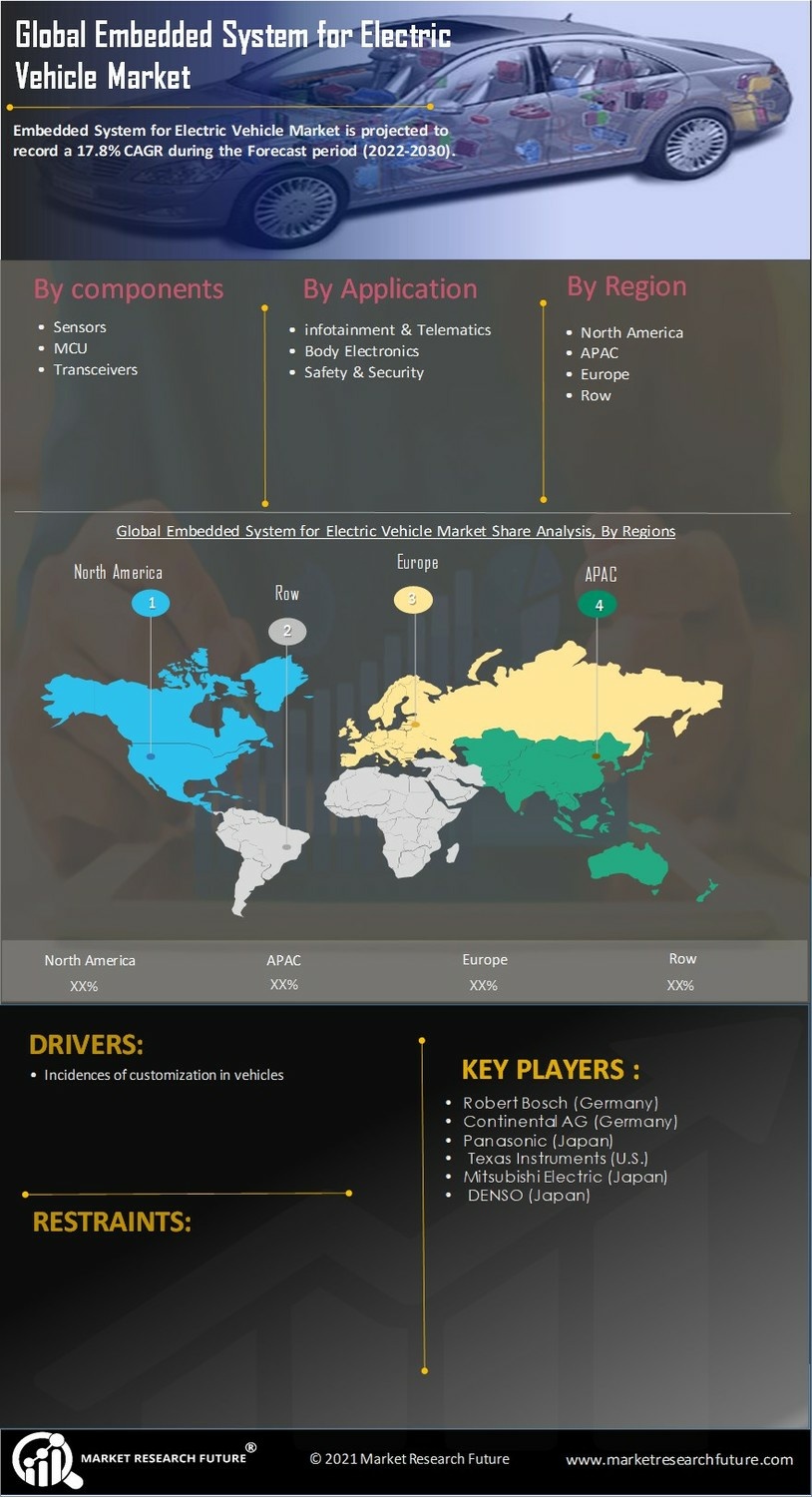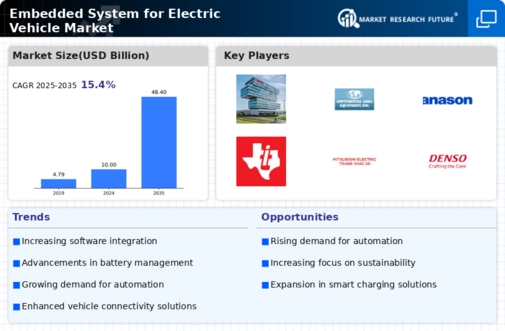The increase in consumer awareness about vehicle safety is driving the market growth
The government's strict safety regulations and rising customer awareness of vehicle safety have a favourable effect on the automotive embedded system market. Airbags, electronic brake-force distribution, and antilock braking systems are some of the embedded system's features that offer passenger safety when riding in a car. For instance, in India, two airbags will be required in all passenger cars starting in April 2021 and ABS will be required for all vehicles starting in April 2019. The need for features like electronic stability control (ESC), electronic steering, and advance driver assistance systems (ADAS) is rising globally.
Additionally, the spread of the ADAS ecology and technology advancements have made it simpler for OEMs to integrate the embedded system into typical passenger vehicles. Thus, it is anticipated that all of the recent technical advancements would fuel the expansion of embedded systems in the automotive industry.
The development and implementation of the embedded system for electric vehicle market growth include a wide spectrum of individuals. Due to rising consumer demand, worldwide car sales and production are rising every year. The global automotive embedded electric vehicle market will be driven by the embedded systems that are installed in every manufactured car. These systems' main attributes are their adaptability, dependability, power, efficiency, quickness, and accuracy. These systems are characterised as specific functionalities and solutions with a focus on addressing time-sensitive requirements.
Rail, space, automotive, electronic payment systems, aviation, and mobile communication are just a few of the industries that use embedded systems.
The development of embedded systems in the automotive industry is anticipated to be fueled by a number of additional variables, including uses of these systems in the automotive sector and rising demand for these systems coupled with integrated graphics. The need for these systems has, however, increased over the past several years in the auto industry due to rising demand for more intelligent, energy-efficient vehicles. These systems are the building blocks of smart products, and rising demand for them has led to a rise in the use of embedded hardware and software in the automotive sector.
The demand for portable computer devices and multimedia products in the automotive industry, such as parking sensors and GPS, is anticipated to increase demand for these systems.
Additionally, it is anticipated that the market for embedded systems in the auto sector would rise due to the strong economic expansion of emerging nations around the world. Over the course of the forecast period, all of these trends are anticipated to increase the market share of these systems in the automotive sector. The nature of the devices connected to motors and their data are changing due to the advent of the Internet of Things (IoT). A software system, notably Java, now has new chances to be the natural method of interaction, development, and control.
The foundational components of the Internet of Things (IOT) include embedded sensors, image recognition technology, and near field communication (NFC) payment. Thus, driving the Embedded System for Electric Vehicle market revenue.
The integration of advanced embedded systems within electric vehicles is poised to enhance operational efficiency and safety, reflecting a broader commitment to sustainable transportation solutions.
U.S. Department of Energy








